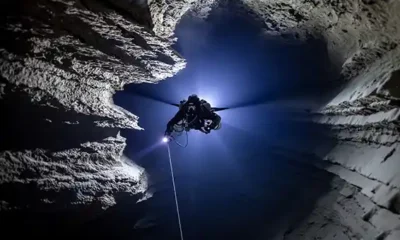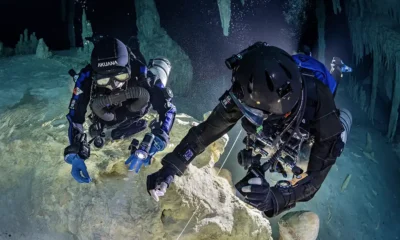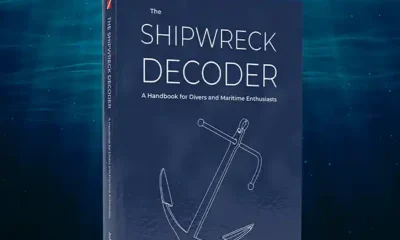News
Finding a P38 Lightning
by Fabio Giuseppe Bisciotti

Our team added another wreck to our list. This time, we located a long lost American fighter, a Lockheed P38 Lightning. This war plane ditched in the Italian territorial waters on 25 Aug 1943 during its final approach to attack the city of Foggia’s Airfield complex during the very sad days of the Summer 1943. The city of Foggia suffered incredible bombings losing, in very little time, around 22,000 souls.
All we know about this wreck comes from the DECLASSIFIED documents that we discovered, composed by the PTRD trainer Alessandro Aulicino, Pietro Amoruso and by RAID deep diver Mariagrazia Antonaci. This plane was a P38 piloted by Second Lt. Warren Singer. It took off from Grombalia, Tunisia, to complete a strafing mission on Foggia. The plane suffered a failure and the pilot, who was escorting a wounded wingman, crashed and submerged in the water of the Gulf of Manfredonia, a short distance from the coast. At this time, the team is treating the location of the wreck confidential.
We know for sure that one of the most important dangers for the wrecks are smugglers and scavengers who would destroy a wreck to take a souvenir, so we are in earnest discussion with the Naval Authority asking them to close the area and to classify the wreck as an historical landmark”.
As soon as our team arrived on the wreck site, we were able to see the high level of preservation of the aircraft thanks to several factors, one being the mud which preserved the wreck and allowed it to remain well maintained. Another factor was the quality of the materials the plane was built with, which were undoubtedly far superior to any other war industry of the period.
And, finally, another was the pilot’s perfect ditching maneuver. He literally “flopped” into the water, neither causing the fighter to overturn nor damaging it at the moment of impact. What is most amazing is the extremely intact cockpit, completely covered in mud. When cleaned it felt like we were experiencing a dive into 1943. It’s incredible to see such exquisite quality before our eyes.
Thanks to the incredible effort of the entire team, we managed to recover some very important artifacts from the cockpit. The most important find we recovered and cataloged was of primary interest for the purpose of a correct classification of the plane. It was a remote control device applied to the joystick that enabled the pilot to take pictures of their engagements with enemy aircraft.
All the British Pathe’ style videos, with verbal testimonies of kills were taken with this remote command, so I would say it was an excellent find. In the next dives we will certainly try to recover more artifacts. If so, we will certainly donate them to Prof. Giovanni Simone’s Sea Museum of Manfredonia as a gesture of the high esteem we hold him in, and our sincere gratitude for his tireless efforts and many generous contributions to the local historical cause.
DIVE DEEPER
InDEPTH: Surveying and Identifying a Sunken JU 88a German WWII Aircraft by Fabio Biscotti (2019)
InDEPTH: Getting to the Bottom of the HMS Regent Mystery by Ashley Stewart (2022)

Wreck explorer Fabio Giuseppe Bisciotti is a RAID Tech instructor who has long been interested in natural and maritime history and a regular contributor to InDEPTH. Based at the Aquodiving Tremiti Diving Center in Foggia, Italy, Fabio joined Project Baseline in 2017 to help protect and monitor the underwater environment in Tremiti Islands National Park. In 2018, he partnered with the U.S. Defense POW/MIA Accounting Agency (DPAA) Mediterranean Directorate, to help screen and identify U.S. military wrecks in the South Adriatic Sea. In 2020 gained after dives in situ, the correct identity of Italian navy Submarine, Giovanni Bausan in the lower Adriatic Sea and in May 2022 he found and visited the lost submarine HMS REGENT, sunk on 18th April 1943. Actually he is involved in the research operations about the lost bombers of 15th Air force in South Adriatic Sea.

















































